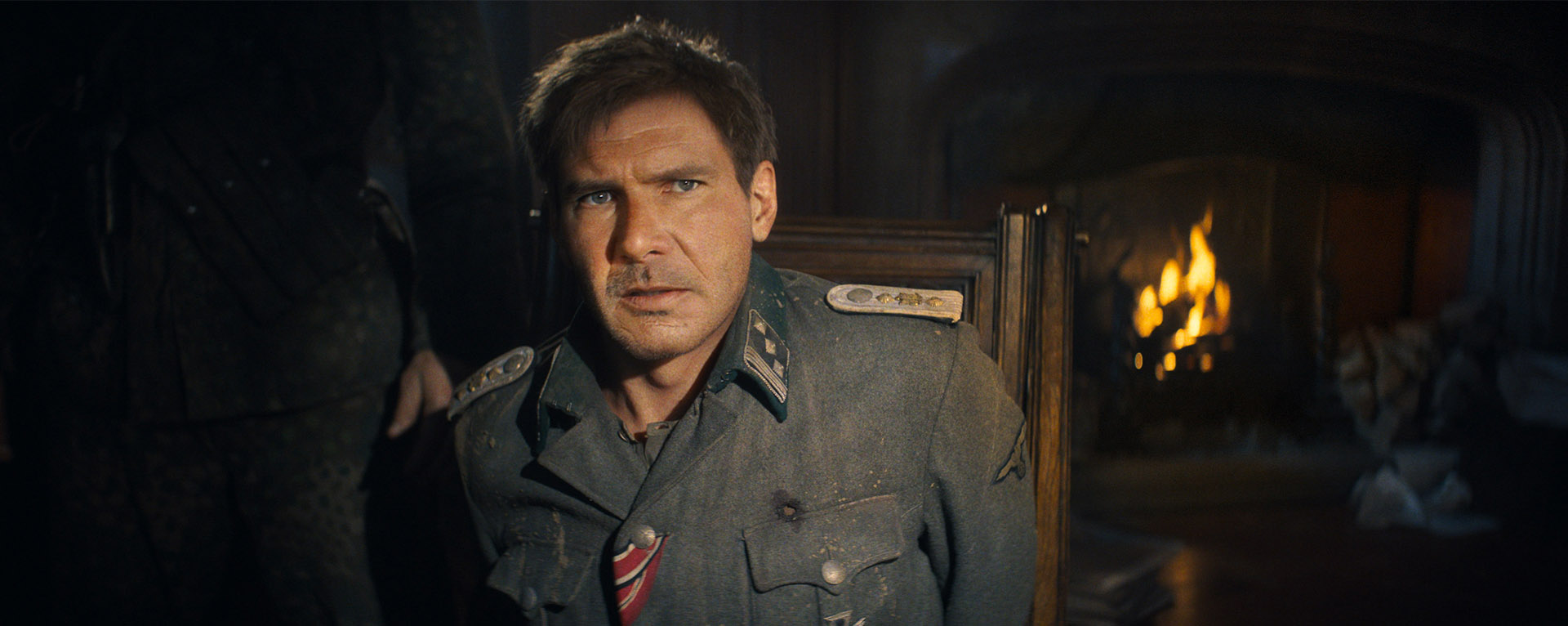Defining Moments: “I Like to be Alone”
The last entrance of Indiana Jones is a telling one.
“Defining Moments” is a continuing series exploring key scenes or sequences from Lucasfilm’s many productions. It examines storytelling craft, behind-the-scenes insights, and cultural legacies from each selection. Revisit an old favorite or discover something brand new…
Production: Indiana Jones and the Dial of Destiny (2023)
Indiana Jones has had some memorable entrances during his big screen adventures. In Raiders of the Lost Ark (1981), we meet him as an anonymous silhouette, tramping through a South American jungle, as alluring as he is threatening. The setting and costumes change dramatically for Indiana Jones and the Temple of Doom (1984), when Indy arrives in a Shanghai nightclub sporting a white jacket and utters his first lines in Chinese (likely Mandarin). In his next two adventures, Indiana Jones and the Last Crusade (1989) and Indiana Jones and the Kingdom of the Crystal Skull (2008), the hero is introduced as a prisoner (excluding, of course, the memorable prologue in The Last Crusade when the young River Phoenix plays Indy as a teenager).
Indiana Jones and Dial of Destiny’s (2023) introduction is reminiscent of both The Last Crusade and Crystal Skull: Indy is again a prisoner, this time during a prologue set in World War II, when he is dragged inside a castle by German troops, a bag over his head. We’ve grown quite accustomed to seeing Indy in these circumstances, and have no doubts about his ability to find a way out of the situation. But where his earlier entrapments show Indy gruff and defiant, one subtle moment hints at the character’s deeper vulnerabilities.
When the bag is removed from Indy’s head, he appears to be wearing a German uniform. His antagonists have discovered that he is an infiltrator, and as the commanding officer begins his interrogation, he asks Indy if he is alone on his mission. Indy needs to deflect the question because he indeed has a friend hiding out in the nearby woods, fellow archaeologist Basil Shaw (Toby Jones). “I like to be alone,” Indy says with quiet irreverence.
He isn’t exactly lying, nor is he sharing the whole truth. But in his attempt to throw his opponent off the scent, he reveals a piece of his true self. This moment communicates across eras. The prologue is set some 25 years ahead of the primary story told in Dial of Destiny, where yet again we see Indy alone. It’s a poignant opening line, and noticeably different from what’s been seen in the past. For those who have followed Indy on his decades-long journey, it’s an indication that this last adventure will waste no time in going to the heart of the character.
From the beginning, Indiana Jones has been a mysterious, elusive character. As we have explored elsewhere on this blog, he is both worldly and isolated, prone to changing his surroundings and social group when things become difficult. Although he has lasting and rewarding friendships, not to mention the love of his life in Marion Ravenwood, Indy is never quite comfortable with other people for too long. In Dial of Destiny, he learns, perhaps for the last time, how best to let go of his past fears and embrace the love of those in his present.
Lucasfilm characters are often archetypal in that they are readily distinguished by their behavior, characteristics, and even appearance. Where Indiana Jones is gruff, improvisational, and friendly, Princess Leia in Star Wars is regal, pragmatic, and in command. An audience clearly understands these types of characters, their motivations, strengths, and weaknesses, because of the clear definition of their words and actions. It’s a storytelling style derived in part from ancient mythology, wherein characters often served purely thematic functions to communicate a message or idea. The legacy of a Lucasfilm character is that they are as endearing as much as they encapsulate a particular theme.
Lucas O. Seastrom is a writer and historian at Lucasfilm.
—
Lucasfilm | Timeless stories. Innovative storytelling.

